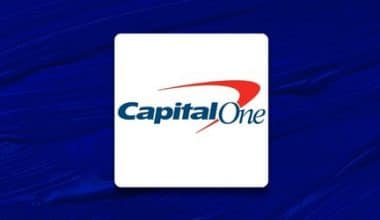What is Debtor-in-Possession Financing (DIP)?
Debtor-in-possession financing (DIP) is a special type of financing for companies that are in bankruptcy. Only companies that have filed for Chapter 11 bankruptcy protection can access DIP funding, which is normally provided at the beginning of a filing.
DIP funding is used to facilitate the reorganization of an owned debtor (the status of a company that has filed for bankruptcy) by allowing you to raise capital to fund your business while your bankruptcy process continues. DIP funding differs from other funding methods in that it generally takes precedence over existing debt, capital, and other claims.
How Debtor-in-Possession Financing (DIP) works
As Chapter 11 prefers corporate restructuring over liquidation, filing for protection can be an important lifeline for companies struggling with funding. In debtor-in-possession (DIP) financing, the court must approve the financing plan in line with the protection granted to the company.
The lender’s oversight of the loan is also subject to judicial approval and protection. If funding is approved, the company will have the liquidity it needs to keep going.
When a company can get DIP funding, it notifies suppliers, suppliers, and customers that the debtor can stay in business, provide services, and make payments for goods and services during its restructuring. If the lender has found the deal credible after reviewing its finances, it stands to reason that the market will come to the same conclusion.
Receipt of Debtor in Possession finance (DIP)
DIP funding usually comes early in the bankruptcy process, but often companies that may benefit from judicial protection delay filing because they do not accept the reality of their situation. Such indecision and delay can waste valuable time as the DIP funding process is typically lengthy.
Antiquity
Once a company goes into Chapter 11 bankruptcy and finds a willing lender, it must seek bankruptcy court approval. The provision of a bankruptcy law under bankruptcy law provides the lender with the much-needed convenience to fund a business in financial need.
DIP-funded lenders take precedence over assets in the event of company liquidation, an approved budget, a market-rate or premium, and any additional convenience measures that the court or lender deems to warrant their inclusion. Today’s lenders generally have to agree to the terms, especially if they are backing out on a property lien.
Approved budget
The approved budget is an important aspect of DIP funding. The “DIP Budget” may contain a forecast of the company’s income, expenses, net cash flow, and results for continuous periods of time. You should also consider forecasting the timing of supplier payments, fees, seasonal variations in your income, and capital expenditures.
Once the DIP budget is agreed upon, both parties will agree on the size and structure of the credit or credit line. This is only part of the negotiation and groundwork required to secure DIP funding.
Loan Types
DIP funding is often provided through fixed-term loans. Such loans are fully funded throughout the bankruptcy process, which means higher interest costs for the borrower. To date, revolving lines of credit have been the most widely used method by which the borrower could withdraw the loan and repay it if necessary like a credit card. This allows for greater flexibility and thus the ability to keep interest costs low as a borrower can actively manage the loan amount borrowed.
Debtor in possession bank account
A US Department of Justice fact sheet states that debtors held in Chapter 11 bankruptcy cases have special obligations regarding bank accounts. You need to:
- Immediately close any bank accounts the company had prior to filing for bankruptcy.
- Schedule new accounts to be opened by contacting the U.S. Trustee’s office to determine if a particular bank has an agreement with the U.S. Trustee to meet specific requirements.
- Open a new bank account specifically designated as a Debtor in Possession account and open those new bank accounts with a bank that has already signed an agreement with the US bankruptcy trustee. This corresponds to the special US requirements. US Bankruptcy Code;
- Fill out and sign the “Declaration from the depositary of the debtor in possession and authorization to release information” (this must also be completed and signed by the bank). and
- Submit the original Debtor in Possession Depository Statement and Information Release Form to the US Trustee.
DIP vs Regular Financing
Debtor-in-Possession Financing – A form of financing for companies in financial distress and in need of bankruptcy relief. In other words, the main purpose of DIP funding is to get an organization out of bankruptcy.
Regular Financing: The process of providing equity funding to an organization for business activities such as investing, purchasing, marketing, and manufacturing.
Debtor in possession financing chapter 11
The process of owning the debtor is long. You must get approval from the US court, judge, and trustee. Various legal activities must also be carried out according to Chapter 11.
Presentation process
A company wishing to obtain DIP funding must first file an application under Chapter 11 with the bankruptcy court.
- Debtor Goes On Business: The phrase “debtor-owned” is given to the person who files for bankruptcy on behalf of the organization. The name implies that the actual equity finance borrower still owns the majority.
- Important decisions: Critical decisions such as business failure, mortgage, and finance agreements, asset sales, leases, and legal fees of the organization are passed to the bankruptcy court.
- Creditor: Individuals associated with the organization can support or oppose bankruptcy proceedings. This includes creditors, stakeholders, and shareholders.
- To create a plan: A reorganization plan must be drawn up prior to financing. It should contain a simplified plan of how the company will use the funds to get out of bankruptcy.
Once everything has been agreed upon, a restructuring plan begins.
Chapter 11 Reorganization Plan and Confirmation
After Chapter 11 has been filed and everything agreed, the debtor has four months to propose a restructuring plan. If the four-month period is missed, it can be extended if the debtor gives sufficient reason.
Overall, the restructuring plan is vital as it shows creditors how the business will work after bankruptcy and how they will meet their obligations in the future.
Below are some of the key features required to validate a restructuring plan:
- Creditors Vote: Once the restructuring plan has been submitted, creditors can vote on whether or not to approve the proposed Chapter 11 plan.
- Feasibility: The bankruptcy court must consider the restructuring plan to be viable. In particular, the debtor must prove that his company is able to generate enough income to cover the expenses.
- Fair and Just: The restructuring plan must be fair and just. This means that secured creditors must receive (at least) the value of your collateral. The debtor cannot retain any equity interests received until the obligations have been paid in full.
- Good faith: The restructuring plan must follow the law.
- Best Interest of Creditors: In the “best interest” case, the debtor must pay the creditor as much as he would if the scheme were to be converted into a Chapter 7 settlement.
In general, the bankruptcy court needs a lot of reasonable evidence that can guarantee the recovery of the organization.
Factors to consider before Funding Is Granted
Once the reorganization plan is confirmed, lenders consider several factors before issuing equity funds:
- Protection of newly subordinated creditors so that they are not supported in the event of a liquidation.
- Careful monitoring of funds so that they are used efficiently.
- The structure of the restructuring plan must be firm and profitable.
- As a lender, you want to make sure the company clears Chapter 11 bankruptcy quickly and efficiently. Many factors need to be considered prior to financing to ensure a return.
Priming DIP Loan
If all else fails and no funding is possible, the bankruptcy court can approve a “first DIP loan”.
- DIP Preparatory Loan: A DIP Preparatory Loan approved by the bankruptcy court allows the debtor to securely borrow funds.
- Lender rights: Conversely, the bankruptcy court grants the lender an initial lien. It gives the obligee the legal right to sell the debtor’s security if he fails to meet his financial obligations.
RELATED POST: Grants: Definition, Types, Examples And Eligibility






